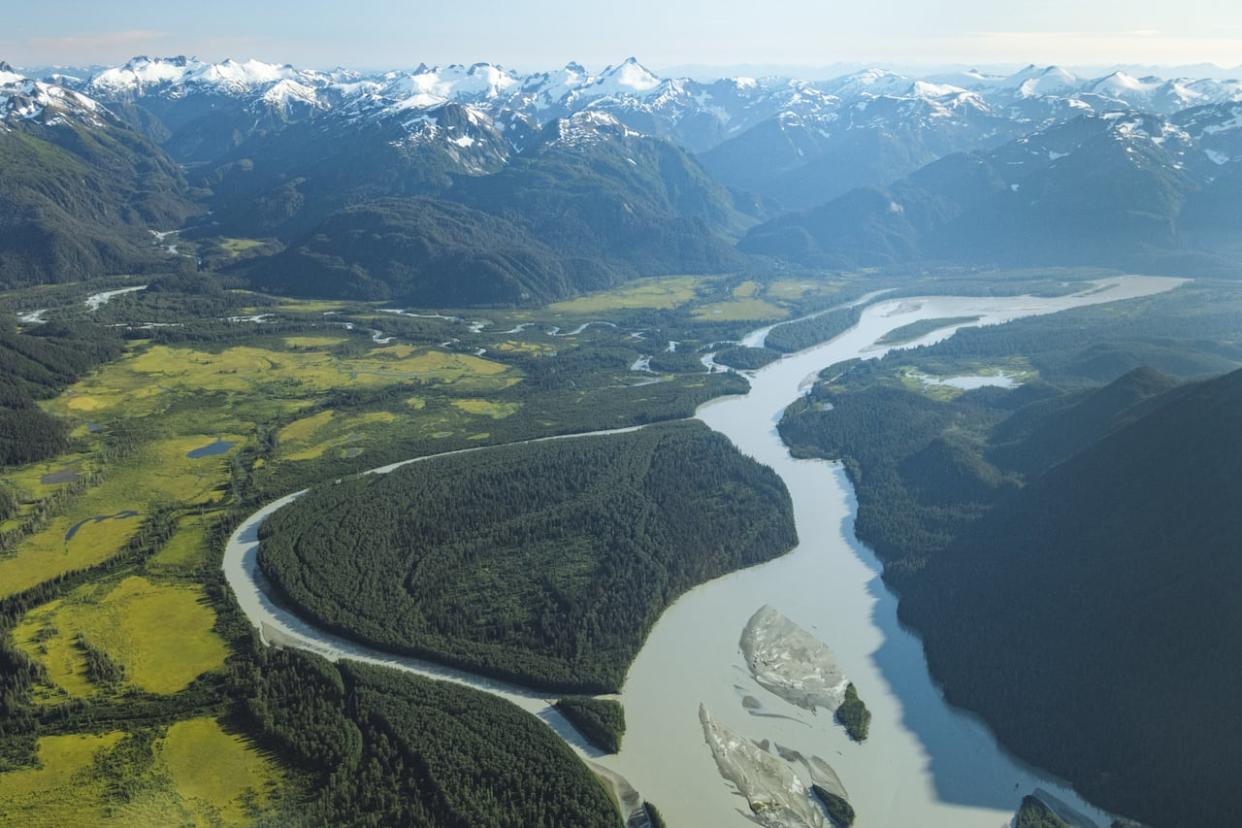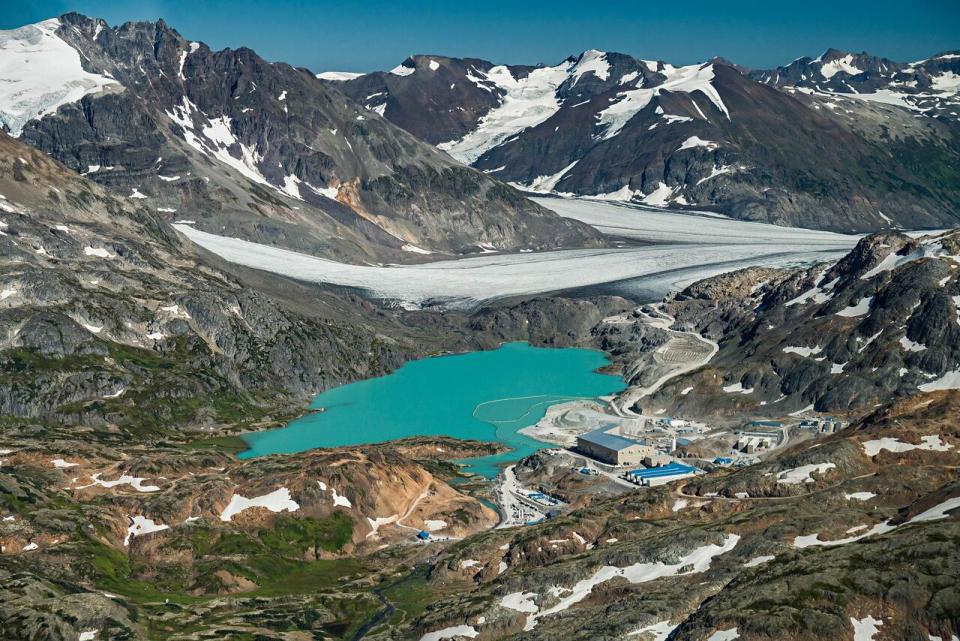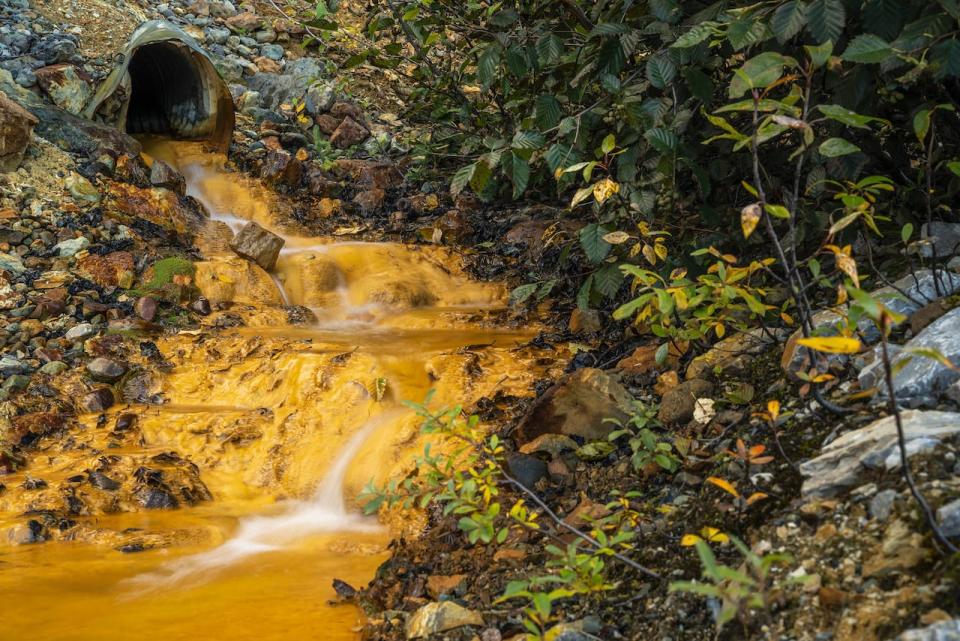Report raises questions around growing mining exploration in northern B.C.

A new report by the U.S. branch of the Environmental Investigation Agency says that investment interest and government tax incentives are fuelling intense mining exploration in remote northern B.C. — raising concerns about the environmental impacts of the work and its financial implications.
The report focuses on the transboundary region, which falls along the border between the Alaska panhandle and the province of B.C. Much of this exploration is focused on the so-calledGolden Triangle, which in many areas is still covered by glaciers.
Scientists say melting glaciers could offernew habitat for salmon. But the area is also rich with gold deposits.
According to the report, more than 450 Canadian companies are currently focused on claims staking and mineral exploration in the area, and are linked by a risk-sharing strategy called the Prospect Generator Model.
The financial model involves staking vast swaths of land and raising funds for multiple claims at once, sometimes in partnership with several companies.
Incentives needed due to risk
Just one company, Brixton Metals, has a mineral claims area twice the size of Los Angeles.Incentives needed due to risk
The hope is that at least one claim will become a profitable mine and cover costs for all, and in the meantime, major investors and company executives can be paid through raised capital. In the meantime, the report says, "average investors, Canadian taxpayers, Indigenous peoples, rural residents, and U.S. communities and economies downstream are left shouldering the financial and environmental risks."
Steve Suarez, a corporate tax lawyer and founder of online web resource Mining Tax Canada, said it's true that only one in 10,000 exploration projects becomes a lucrative venture, but that's why protections for investors and tax incentives are in place.
"These exploration companies are going out and spending real money on real people flying around and going out into the bush," he said. "I don't disagree for a second that that's a risky activity. But that's sort of the whole point."
Suarez said that without these incentives, it wouldn't make financial sense to carry out exploratory work.

British Columbia’s Brucejack gold mine in the headwaters of the transboundary Unuk River. Mining stakes cover nearly 90 per cent of the B.C. side of the Unuk River. (Chris Miller/Salmon State)
Kylie Williams, who acts as director of communications with the B.C. branch of the Association for Mineral Exploration, (AME) said that exploration is a vital first step toward securing the critical minerals needed for the green transition.
"If we're going to electrify our economy globally, we need these companies that have the mindset of trying to find metals and trying to find projects that are going to be successful," she said.
But mining advocates say these efforts may be lucrative enough in their own right to allow for continuous exploration without significant accountability around whether there's a business case for a mine.
"It very much is about storytelling," said Nikki Skuce, Director of Northern Confluence and co-chair of theBC Mining Law Reform Network.
Environmental concerns
"I mean, you're trying to get people excited so that they give you funding. There is something around how people [are] getting some pretty cushy wages just telling stories versus actually mining."
While not as intensive as a mining operation, the report also contends that exploration can have a serious environmental impact.
Over a period of five months, they found Teuton Resources, Tudor Gold and American Creek Resources burned over a million dollars worth of fuel for helicopter flights and other uses for the exploration of the claims they co-own.
"The approximately 868,000 litres of fuel burned is equivalent to over 2,000 metric tons of CO2 emissions–or approximately the amount generated by 450 cars driven for one year," the report reads.
80 per cent of claims within 5 kilometres of a river
EIA researchers also found that over 80 per cent of mining claims in the region are within five kilometres of a river or a stream. CBC spoke to several members of local First Nations and Alaskans who expressed concern that industrial activity near the watershed will impact fish and people.
Heather Hardcastle is with the Alaskan non-profit Salmon State, the organization that first commissioned the report from EIA.
"There are a number of experiences that now we have to show that wild salmon and mining really don't mix," she said. "Just a tiny amount of copper in one Olympic sized swimming pool can impact the navigation of wild salmon."
Richard (Chalyee Eesh) Peterson is president of the Central Council of the Tlingit and Haida Indian Tribes of Alaska. He said that he's heard from the B.C. government that the mines being developed today will be different than ones in the past, but it's difficult for him to believe.

Drainage from Canada’s abandoned Tulsequah Chief Mine, which has been contaminating the transboundary Taku River for more than 65 years. The Taku, a vital wild salmon river, empties into the ocean just south of Alaska’s capital. (Chris Miller/Salmon State)
"We keep bringing up the Tulsequah Chief mine because that's a mine that has been contaminating the river and has not been taken care of for, you know, decades and decades now," he said. "Let's talk about that cleanup before we talk about issuing new permits and giving the green light on new projects."
Tulsequah Chief was in operation from 1951 to 1957, producing gold, silver, zinc, copper and other minerals. In 2019, the province committed to cleaning up the abandoned mine site, which is about 80 kilometres south of Atlin, B.C., near the Alaska border.
But to date, run-off from the mine continues to seep into the Taku river, which flows into Juneau.
B.C. minister of mines Josie Osborne said in a statement to CBC that B.C. does not incentivize exploration in fragile areas.
"All proposed exploration is subject to a rigorous permitting process, and proponents must demonstrate that their proposed work is protective of the environment," she said.
Osborne said her government is committed to a competitive mining and mineral exploration sector that grows the economy, supports environmental stewardship, and advances reconciliation.
Several companies also provided CBC with a joint statement in response to the report calling environmental scrutiny in British Columbia "rigorous."
"Projects face federal and provincial assessments in addition to Indigenous consultation," it read.
"Shutdown of mining in the transboundary region [...] would have a devastating effect on local communities, not to mention the provincial and federal tax bases."
Without grassroots explorers, Canada would jeopardize its access to critical minerals, it said, a perspective shared by the AME.
Peterson said he hopes the report released on Jan. 22 will lead to change and more conversations around co-management.
"The more I learn, I think the more appalled I am. It's not just about the salmon," he said. "Our people have been in this area for tens of thousands of years. We watched the Tongass forests grow… our stewardship of these lands and resources has always been about balance. If you wipe out a species, it throws us all out of balance."


